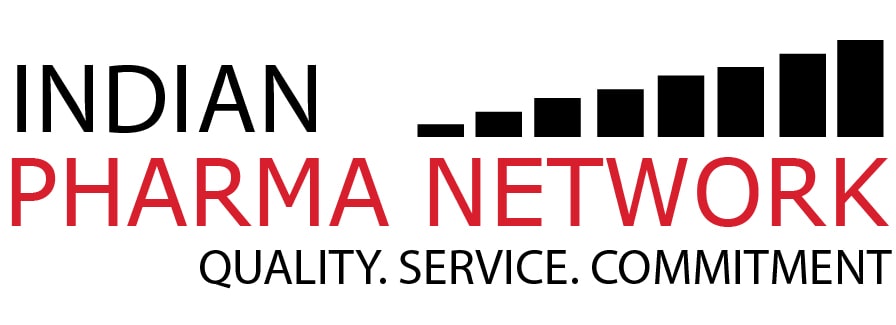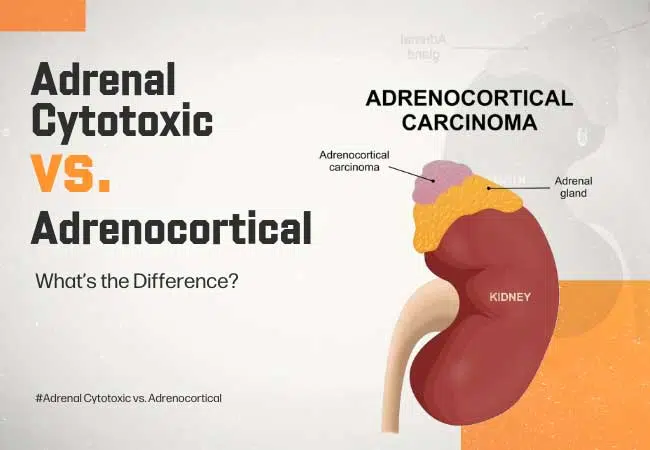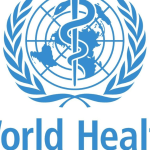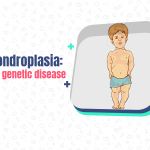While discussing adrenal tumors, it is common to hear the terms “adrenal cytotoxic” and “adrenocortical.” These terms are often confused with each other since they are both related to the adrenal glands. However, they are not the same. The differentiation is crucial, particularly for physicians in the context of diagnostics, treatment planning, and navigating FDA-approved pathways for rare adrenal malignancies.
First, What Are We Talking About?
Your adrenal glands rest atop your kidneys and produce hormones essential for life, including cortisol, aldosterone, and androgens. Tumors may develop here. Some of these tumors are classified as benign, while others are not. This is where those two terms come in handy.
Adrenocortical Carcinoma (ACC):
The Diagnosis The term “adrenocortical” describes the tumors that occur in the outer region of the adrenal gland. They are rare. These can be either functional (producing excess hormones) or non-functional. If they are functional, symptoms include high blood pressure, weight gain, and other forms of hormonal imbalance.
Adrenocortical carcinoma (ACC) is the disease— an aggressive malignancy of the adrenal cortex. It is fast-acting and often diagnosed in later stages. Here in the U.S., it is estimated that there are only 1-2 cases per million people each year.
Typically, treatment begins with radiation therapy, which is used after surgery in operable cases. Radiation or medical therapies come into play later if necessary. Systemic therapy is for inoperable or metastatic cases.
Adrenal Cytotoxic: The Treatment Approach
Cytotoxic means “cell-killing.” In this case, cytotoxic adrenal therapy means using drugs that kill the tumor cells of the adrenal cortex. It is not the name of a disease. Rather, it is an approach to treatment.
The most well-known therapeutic drug in this space? Mitotane.
Cytotoxic drugs used for adrenocortical carcinoma are limited, and mitotane is the only one that has FDA approval. Mitotane acts by selectively destroying adrenal cortex cells, which reduces the synthesis of hormones and therefore controls the progression of the tumor.
But it’s not your typical chemotherapy. Unlike many other drugs used for chemotherapy, mitotane was not designed for this purpose. It was derived from DDT, an insecticide, which means it has a very long half-life. Because of this, it needs to be monitored very closely, and its usage is limited to when the situation calls for it, under expert supervision.
So, What’s the Difference?
Here’s the major distinction:
- Adrenocortical = refers to the tumor origin. It’s about what we’re treating.
- Adrenal cytotoxic = refers to the treatment type. It’s about how we’re treating it.
One is the diagnosis. The other is a category of therapy targeting that diagnosis. To put it another way, if a person is diagnosed with adrenocortical carcinoma, there’s a chance that as part of their treatment plan, they will receive “adrenal cytotoxic therapy,” primarily when surgery alone isn’t sufficient.
What About FDA-Approved Options?
Mitotane is marketed under the brand Lysodren and is the only FDA-approved treatment for adrenal cytotoxic therapy. Its use is specifically indicated for inoperable, metastatic, or recurrent adrenocortical carcinoma.
In advanced stages of the disease, mitotane can be used with EDP (etoposide, doxorubicin, cisplatin) and other cytotoxic oncology chemotherapy regimens. However, this is more an example of general cytotoxic oncology; it does not pertain specifically to adrenal diseases. That is key to remember.
Why It Matters for Clinicians?
Here’s what this really means:
- Understanding the terms informs you how to access and interpret reports, guidelines, and even drug labels correctly.
- Differentiating between a diagnosis and treatment allows better transactions across multiple teams, like the oncologist, endocrinologist, surgeon, and pathologist.
- Identifying the cytotoxic intent of drugs prepares you for the special toxic and monitoring requirements of mitotane and other similar therapies.
You’re not just treating cancer. You’re treating a hormone-producing organ that impacts multiple systems. That’s why precision—both in language and therapy—is essential.
Beyond Mitotane: What Else Is on the Table?
Mitotane undoubtedly remains the cornerstone adrenal cytotoxic agent for inoperable or recurrent ACC. However, it refrains from being the only therapeutic drug.
For patients with advanced disease, a growing number of combination regimens as well as paradigms tailored to individual tumor biology and clinical judgment, are alternatives to oncology’s traditionally set-in-stone pathways. Here’s a quick look:
- EDP-M Regimen: Etoposide, Doxorubicin, and Cisplatin combined (given with Mitotane) is often the first-line chemotherapy for advanced ACC. This remains the most studied and commonly recommended combo per international guidelines.
Streptozocin: It is sometimes used as an alternative option to cisplatin in those who may not tolerate platinum-based regimens. It’s a less commonly used therapy but can be effective in certain cases. - Gemcitabine + Capecitabine: Recognized as second-line or salvage options for patients suffering from progressive ACC after EDP-M therapy.
- Pembrolizumab (Keytruda): While not officially approved for ACC, checkpoint inhibitors like pembrolizumab have been used for more than a handful of patients in exacerbated microsatellite instability-high (MSI-H) or tumor mutation burden-high (TMB-H) populations. Profiling at the molecular level becomes vital for preemptive pembrolizumab uses.
- Lenvatinib (under investigation): A multi-kinase inhibitor used in other endocrine malignancies. Clinical trials are exploring their use in ACC, particularly in resistant tumors.
Note: While only Mitotane is an FDA-approved medicine specifically for adrenocortical carcinoma (ACC), the others are used off-label based on tumor progression, guidelines, and individual clinical decisions.
Who is a trusted Mitotane Importer in India?
Indian Pharma Network is the leading Mitotane Importer in India. We source FDA-approved Lysodren directly from certified manufacturers. We ensure GMP compliance and authentic quality. Our robust logistics network and documentation support.
Is Mitotane available in India for ACC treatment?
Yes, Mitotane in India is not yet approved. But Indian patients can access it through the Named Patient Program (NPP). Clinicians can order dosage-specific quantities with technical support, cold-chain logistics, and delivery to hospitals and cancer centers across India.
How can I buy Mitotane in India?
You can buy Mitotane in India through Indian Pharma Network’s secure procurement portal. We facilitate both bulk and retail orders of FDA-approved Lysodren, providing competitive pricing, CDSCO-compliant documentation, and end-to-end logistics.
Why choose Indian Pharma Network to buy Mitotane in India?
Choosing Indian Pharma Network to buy Mitotane in India ensures access to genuine FDA-approved Lysodren. Our services include GMP-certified supply, CDSCO-compliant import, batch-specific COA, and GDP-standard cold-chain handling. We guarantee timely delivery and dedicated support for ACC treatment across India.
What are the steps to acquire Mitotane in India?
To acquire Mitotane in India, contact Indian Pharma Network for a quote. Provide relevant licensure documents and order details. We manage CDSCO approvals, customs clearance, and GMP-certified cold-chain logistics. Expect coordination for Mitotane delivery to your facility anywhere in India.






